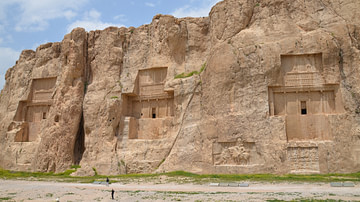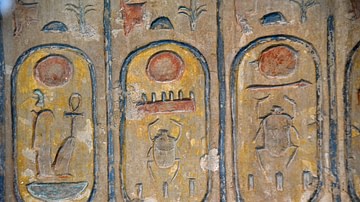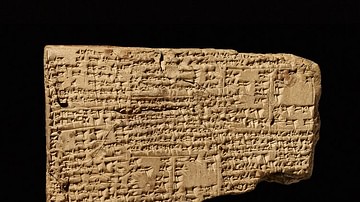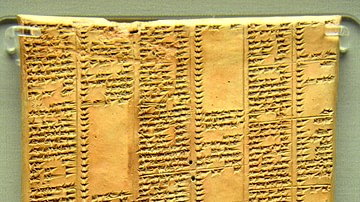Search
Search Results

Article
Ancient Persian Gods, Heroes, and Creatures - The Complete List
The term 'mythology' comes from the Greek mythos (story-of-the-people) and logos (word or speech), meaning the spoken story of a people. Every civilization of the ancient world developed a belief system, which is characterized as 'mythology'...

Article
Egyptian Gods - The Complete List
The gods and goddesses of Ancient Egypt were an integral part of the people's everyday lives for over 3,000 years. There were over 2,000 deities in the Egyptian pantheon, many whose names are well known - Isis, Osiris, Horus, Amun, Ra, Hathor...

Article
Sassanian Kings List & Commentary
The Sassanian Empire (224-651) was the greatest expression of Persian culture in the ancient world. It was consciously modeled on the earlier Achaemenid Empire (c. 550-330 BCE) which established Persian supremacy in the region and developed...

Article
Achaemenid Kings List & Commentary
The Achaemenid Empire (c. 550-330 BCE) was the first great Persian political entity in Western and Central Asia which stretched, at its peak, from Asia Minor to the Indus Valley and Mesopotamia through Egypt. It was founded by Cyrus II (the...

Definition
The Seven Wonders
The Seven Wonders of the Ancient World were seven impressive structures famously listed by ancient writers including Philo of Byzantium, Antipater of Sidon, Diodorus Siculus, Herodotus, Strabo, and Callimachus of Cyrene, among others. The...

Definition
Sumer
Sumer was the southernmost region of ancient Mesopotamia (modern-day Iraq and Kuwait) which is generally considered the cradle of civilization. The name comes from Akkadian, the language of the north of Mesopotamia, and means “land of the...

Image
King-list of Egypt, Detail of the 18th Dynasty
A pharaoh was known primarily by his throne name. This was traditionally a statement about his divine father, the sun-god Ra, so all cartouches with throne names display a sun-god at the top. A king's birth name was the only name he had already...

Image
Neo-Assyrian Cuneiform Lexical List
Neo-Assyrian lexical list of names of stones on a clay tablet.

Image
Babylonian Cuneiform Lexical List
Late Babylonian lexical list of personal names on a clay tablet.

Image
Cuneiform Synonyms List
Occasionally, cuneiform text scribes encounter difficult or rare words. The list on this clay tablet explain such words. From the library of Ashurbanipal at Nineveh (modern-day Ninawa Governorate, Iraq), northern Mesopotamia. Neo-Assyrian...